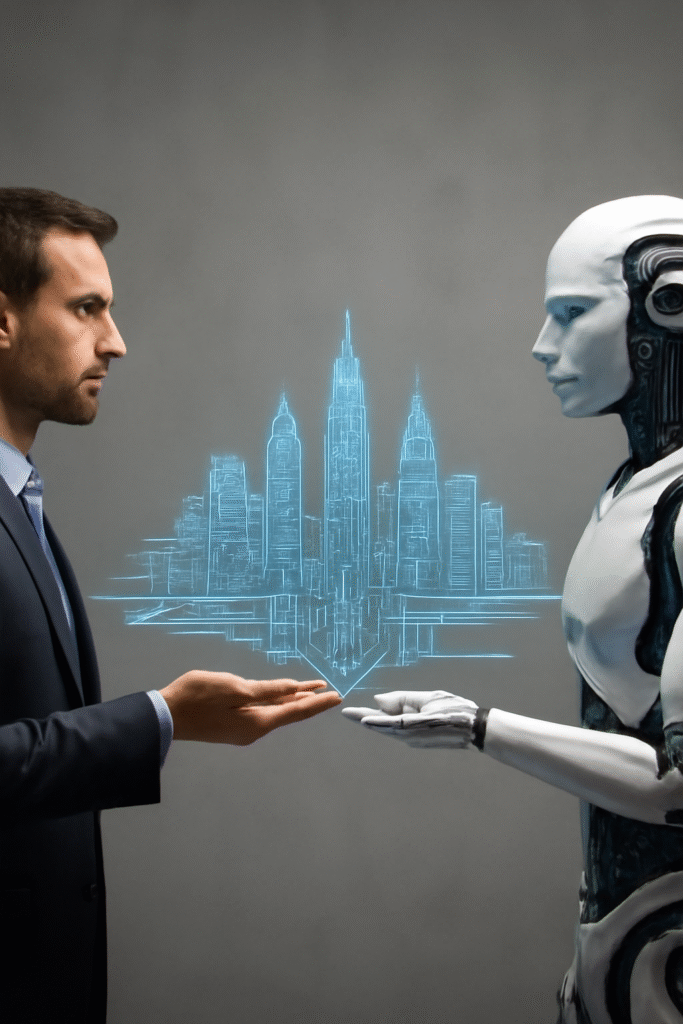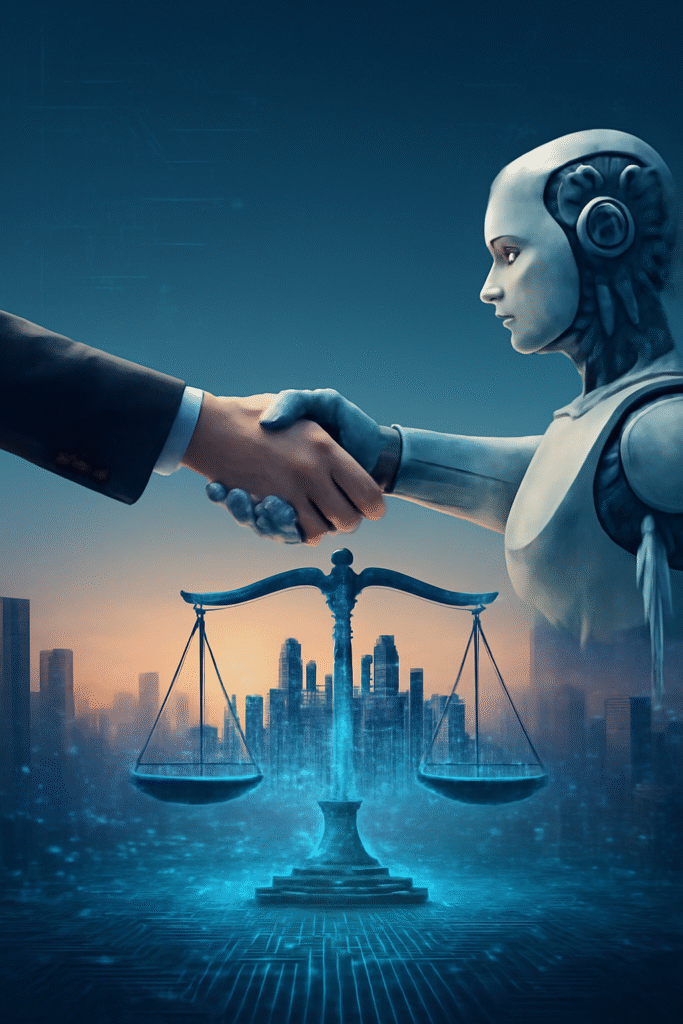A cada dia, a tecnologia torna-se mais entrelaçada com a vida humana do que a maioria de nós imagina.
Quando faz uma pergunta a um assistente digital, quando o seu feed de redes sociais sugere novos conteúdos ou quando um videogame o emparelha com outro jogador — os algoritmos trabalham silenciosamente.
Eles moldam o que vemos, aprendemos e até mesmo como pensamos.
Mas se os algoritmos estão a fazer tantas escolhas por nós, quem garante que essas escolhas são corretas ou justas?
Essa discussão essencial forma a base do que hoje é chamado de ética algorítmica — um campo que convida todos, desde crianças a explorar seus primeiros aplicativos até adultos a liderar o design de plataformas globais, a pensar sobre os valores por trás do código.
O que exatamente é um algoritmo?
Um algoritmo é uma sequência lógica de instruções que diz a uma máquina o que fazer para resolver um problema ou alcançar um resultado específico.
Não é diferente de uma receita: uma etapa segue a outra até que o objetivo seja alcançado.
Sempre que você pesquisa online e vê uma lista de resultados que parecem adaptados aos seus interesses, um algoritmo já estudou padrões do seu comportamento passado para prever o que pode agradá-lo a seguir.
Das compras online aos sistemas de navegação, do reconhecimento facial às salas de aula digitais, os algoritmos orquestram silenciosamente o mundo moderno.
Mas enquanto uma receita serve comida, um algoritmo serve decisões — e essas decisões podem afetar profundamente a vida das pessoas.
Compreender a ética e por que ela é importante na tecnologia

A ética refere-se aos valores e princípios partilhados que orientam o que os seres humanos consideram certo, justo e benéfico para os outros.
Uma pessoa ética é alguém que age com justiça, respeito e responsabilidade.
No entanto, as máquinas não sabem como cuidar ou julgar.
Elas simplesmente reproduzem as intenções dos seus criadores.
É por isso que a reflexão ética não pode parar nos fios e no código — ela deve começar com as pessoas.
Ensinar a tecnologia a «não causar danos» começa com a definição do que significa «dano», e essa é uma conversa profundamente humana.
Por que a ética algorítmica é urgente
À medida que a inteligência artificial aprende a tomar decisões mais autônomas — desde recomendar tratamentos médicos até priorizar notícias —, devemos garantir que essas decisões permaneçam alinhadas com a justiça humana.
Considere alguns exemplos:
Se uma escola usasse software para classificar o desempenho dos alunos, ou se um hospital dependesse da IA para determinar quem recebe tratamento primeiro, a ausência de um design ético poderia levar à injustiça ou discriminação.
O design algorítmico deve, portanto, fazer perguntas mais profundas:
Este sistema poderia excluir alguém involuntariamente?
Quais valores estão codificados neste processo de tomada de decisão?
Que tipo de mundo estamos a reforçar através das nossas escolhas de dados?
Como os algoritmos moldam a vida cotidiana
A ética na tecnologia não é um debate abstrato — faz parte da nossa rotina diária.
Nas redes sociais, os algoritmos decidem quais histórias ou publicações você vê primeiro, influenciando sutilmente o humor, a opinião e o comportamento.

As máquinas não podem sentir compaixão, remorso ou empatia; elas só podem simular esses sentimentos por meio de dados.
Portanto, a tarefa de incorporar a ética na IA cabe aos humanos que escrevem, treinam e supervisionam esses sistemas.
Alguns princípios orientadores moldam esse esforço:
Justiça: nenhum indivíduo ou grupo deve ser prejudicado devido à raça, gênero, idioma, crenças ou renda.
Privacidade: os dados sobre as pessoas devem ser protegidos e usados com o seu conhecimento e consentimento explícitos.
Transparência: todas as pessoas afetadas por decisões algorítmicas têm o direito de entender — ou pelo menos questionar — como esses resultados foram obtidos.
Responsabilidade: quando ocorre um dano, deve haver uma linha clara de responsabilidade que remeta aos programadores, empresas ou tomadores de decisão envolvidos.
Ensinar moralidade a uma máquina, portanto, trata-se realmente de lembrar aos humanos que devem permanecer morais ao construir máquinas.
Quando os algoritmos falham:
Mesmo a IA mais avançada pode herdar preconceitos do mundo do qual aprende.
Se os seus dados de treino refletem preconceitos, desigualdades ou estereótipos, essas mesmas falhas podem tornar-se incorporadas no seu processo de tomada de decisão.
Outra questão é a opacidade: às vezes, a lógica interna de um algoritmo é tão complexa que nem mesmo os seus criadores conseguem explicar completamente por que ele se comporta de determinada maneira.
É por isso que a supervisão ética deve ser contínua, como um professor que orienta alunos que aprendem constantemente.
Os algoritmos exigem a mesma estrutura que os humanos: orientação, feedback e correção.
O caminho a seguir: projetando um algoritmo justo

À medida que carros autônomos, médicos robóticos e cidades algorítmicas se tornam normais, a reflexão ética será tão fundamental para a engenharia quanto a matemática.
A tecnologia do futuro precisará não apenas de velocidade e precisão, mas também de empatia traduzida em design.
As crianças e os adolescentes que crescem hoje criarão um dia os algoritmos do futuro.
Se o raciocínio ético se tornar parte da educação infantil, a próxima geração de programadores compreenderá que cada linha de código é também uma decisão moral — uma escolha que pode moldar a sociedade para melhor ou para pior.
O nosso objetivo não é simplesmente ensinar algoritmos a seguir regras, mas ensinar a humanidade a pensar antes de programar.
Uma pergunta final para o futuro
A inteligência artificial e os sistemas algorítmicos estão a transformar como vivemos, decidimos e nos relacionamos.
Para que o progresso seja verdadeiramente significativo, devemos combinar inovação com consciência — garantindo que a tecnologia sirva a humanidade, em vez de governá-la.
O futuro da ética da IA é o futuro da empatia traduzida em lógica.
Ao projetar algoritmos justos, proteger os vulneráveis e promover a transparência, construímos não apenas máquinas mais inteligentes, mas também uma civilização mais sábia.
